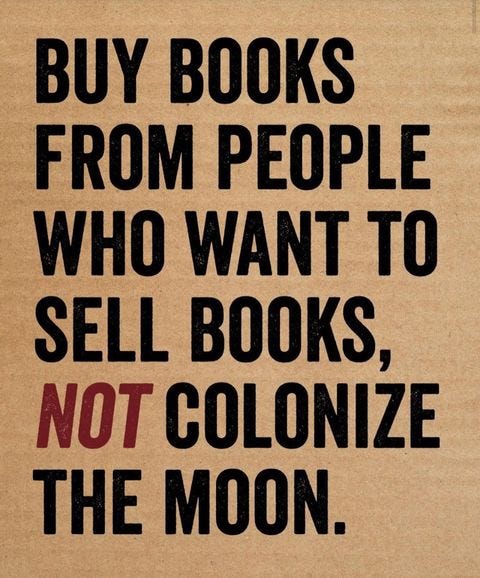Out of Scope Issue 24: Olivia Rodrigo says vaccines are good 4 u
This week’s non-required thinking on reputation, business, and culture
This week, we’re looking at vaccine comms from France and Olivia Rodrigo, manifesting the return of Clippy, and watching the skies for space billionaires and their marketing campaigns.
📡 ON OUR RADAR
How much longer will traditional press expectations in athletics hold up? Naomi Osaka published a piece in TIME after the weeks-long controversy surrounding her decision to opt out of press interviews at the French Open. Her unyielding advocacy for mental health protection is forcing people to reexamine traditional athlete-media expectations and consider if there are circumstances that excuse a professional athlete's right to take a mental break from media scrutiny.
Truth is stranger than fiction… 2017’s viral (and fictional) New Yorker short story by Kristen Roupenian has a new chapter with a Slate essay from the apparent subject of the piece. So do authors taking a bit more than a few details from reality need to disclose their sources?
Never say an essay can’t change the course of an industry. Inspired by beauty journalist Jessica DeFino’s essay asking “Where Are All The Brown Hands?”, Hannah Harris took a few photos and has quickly become the hands of brands like Glossier, Benefit Cosmetics, Supergoop. It’s a small but meaningful change for the beauty industry, quickly transforming marketing to reflect its full audience.
Facebook does an about-face on data privacy by trying to quietly avoid an MRC brand safety audit. The platform promised to undergo an audit by the Media Rating Council over a year ago, but sources report that Facebook has failed to even construct a contract regarding details of the audit. On top of that, in what’s probably one of the most ironic advertising moves we’ve seen in a while, Facebook’s “Born in ‘96” campaign calls for stricter internet regulations regarding personal information and online data.
In the midst of a “return to work” movement and employees discovering what a work/life balance can be, Fast Company’s Leslie Jones explains three ways leaders can embrace their employees’ ‘screw you’ attitude. In the piece, she expands on several reminders in internal communications: “create a safe space to ask the hard questions,” “rethink human resources and benefits,” and “create a sustainable feedback loop” so your employees feel appreciated and valued.
The era of 18-24-year-old Sportfluencers is upon us and brands are jumping on board. The NCAA’s monumental new policy will finally allow college athletes to make money from their NIL (name, image, likeness). The policy may be new to everyone, but athletes and marketers have primed themselves to quickly determine clever strategies. While exciting, brands will need to add a *rules differ state-by-state* section to their Sportfluencer playbooks.
We’re seeing a renaissance of the whisper, in contrast to four years of Trump’s shouting. Employing an old tactic to try and make a connection while emphasizing a point, Biden whispered some of his answers to reporters’ questions during an impromptu White House news conference last month.
In an effort to minimize potentially predatory marketing efforts, TikTok has banned creators from promoting cryptocurrency and other financial products such as trading platforms or loans, according to its branded content policy, likely barring sponsorships from Robinhood, Coinbase, Afterpay, Klarna, and others.
France leveled up the stakes of its vaccine comms with a dose of accountability. After President Emmanuel Macron announced that restrictions will apply only to unvaccinated individuals and a “health pass” will be required for entry to large-scale events or travel, more of the population rushed to get jabbed.
What’s your brand purpose? The age-old question is more important than ever amidst a pandemic and civil unrest. Marketing leaders from top global brands gathered for a virtual ANA roundtable during Cannes Lions where they discussed their ever-changing roles while consumers demand more from their brands. Mathilde Delhoume, global brand officer at LVMH, uses the five Ds to ensure clarity of her brand purpose: “DNA-rooted, decisive, distinctive, desirable, and durable.”
Not many 19-year-olds can gather the courage to deliver a speech at the ESPYS. Last weekend, UConn women’s basketball phenom Paige Bueckers accepted her award for Best College Athlete with poise and grace well beyond her years. Her words resonated with many as she recognized she’s “a white woman who leads a Black-led sport” and that Black women deserve more credit and media coverage for their undeniable value. Kudos.
Start the piece for a chuckle at the ruthless writing style, stay for the takeaway. Baffler reviews Billion Dollar Brand Club by Lawrence Ingrassia, which describes products that have made little to no impact on consumers’ lives but became billion-dollar brands by creating a common product for the internet age. The takeaway: anyone can make a DTC company if the brand goes viral enough (a well-connected network helps too).
Are we really losing much with the end of third-party cookies? According to a recent (though admittedly small sample) study by Adalytics, advertisers are too often completely missing the mark with targeted ads. Sometimes it’s more effective to just know what your audience is likely to read.
How far can an influencer influence? Olivia Rodrigo, Disney+ star, once again makes feel-good headlines, but this time it’s for helping the White House encourage teens to get vaccinated.
This week Microsoft employed a classic social media engagement bargaining tactic: “we’ll give you something if you like this.” In this case, they asked for 20K likes in exchange for the resurrection of Clippy, their 90s icon. But they’ve reached 30K likes, and Clippy is nowhere to be found, leaving us wondering if Microsoft didn’t think they’d actually get that many likes.
Aw, Fleets tried. Twitter announced they’ll remove the short-lived feature in August. We suppose people want their hot takes to live on forever.
Apparently, it’s really hard to monitor social media for racism when the messages are written in emoji.
Municipal marketing may be the new category to watch. Rather than taking a traditional path to growth by incentivizing large corporations to build in their area, smaller cities are instead flexing their charm to individual remote workers. Apparently, touting a championship sports team is a key message, which begs the question: will Milwaukee or Phoenix see better growth this year?
🏆 REPUTATION FAIL OF THE WEEK: Wendy Williams
Wendy Williams is once again in hot water after she turned the death of TikTok star, Swavy (also known as Matima Miller), into a competition for social media followers. The talk show host kicked off her “Hot Topics” segment by asking audience members to clap if they had ever heard of the creator. “I have no idea who this person is,” Williams said. “Neither does one person in this building.” She then lamented that he had more followers than her but, in a weird move to both comfort the host and keep the conversation rolling, Wendy’s producer reminded her that she has a bigger following on Instagram, which got an enthusiastic round of applause from the audience. “So here he is,” Williams turned around to look at the photo projected on the screen behind her, and some audience members laughed before she continued, “He’s 19, and he was murdered.”
Along with the outrage on social media calling for the cancellation of The Wendy Williams show, Swavy’s mother is now demanding an apology from the talk show host. It’s not uncommon for talk show hosts to speak about social media stars on their show, but most of the time it’s before they bring them on stage, not to bemoan their level of fame before crassly reporting their passing. This is not the first time Wendy has been in trouble, and it certainly will not be the last, but at this point, after more than 10 years on the air, we thought she might have a little more sense of what to say and how to say it.
💡ON OUR MINDS:
Billionaires: In space!
Within the span of a week and a half, two of the world’s richest businessmen reach new heights with their inaugural space flights. And of course, Jeff Bezos’s Blue Origin and Richard Branson’s Virgin Galactic are battling it out in their marketing efforts.


In Virgin Galactic’s webcast of the event, Richard Branson was pictured riding his bike toward New Mexico's state-owned Spaceport America before taking flight. Apparently, the clip was a prerecorded video and not live coverage, taking just a bit of spice out of what was already a pretty full day for Branson.


Blue Origin, owned/funded by Jeff Bezos, had opened up a spot last month for their first flight alongside Bezos and his brother to go to the highest bidder - who apparently had a scheduling conflict. The anonymous bidder, winning the auction with a $28 million bid, will head to space later, swapping spots with 18-year-old Oliver Daemen.
Meanwhile, independent bookstores brought back the American Booksellers Association campaign calling for readers to buy from anywhere other than Bezos’s Amazon.
Some are criticizing (or satirizing) the highly publicized launches amidst a global pandemic, recalling Gil Scott-Heron’s 1970 poem “Whitey On the Moon,” written after the first moon landing.
Whatever your take on the morality of the missions, the marketing for these new commercial ventures will be something to watch, as the world’s super-rich decide where to spend for out-of-this-world experiences.
We’ll see you here next week! 👋
HL
===
The fine print:
This newsletter brought to you by emergency sounds around the world: rated.


